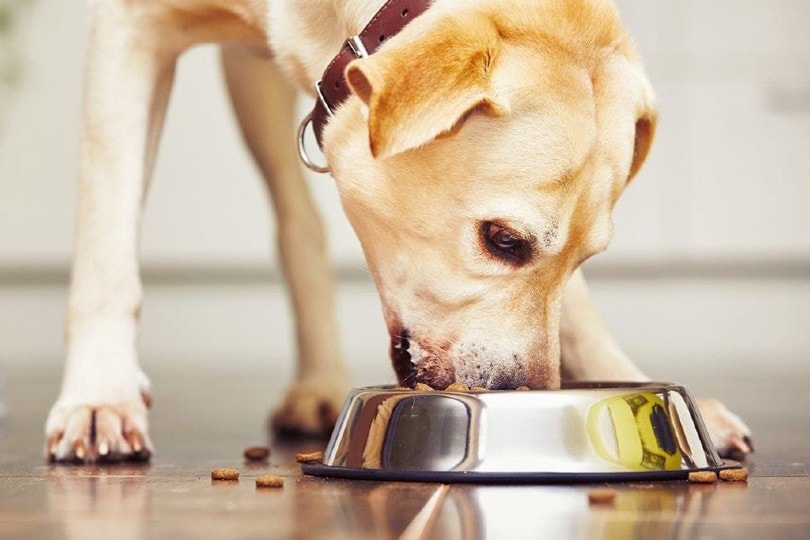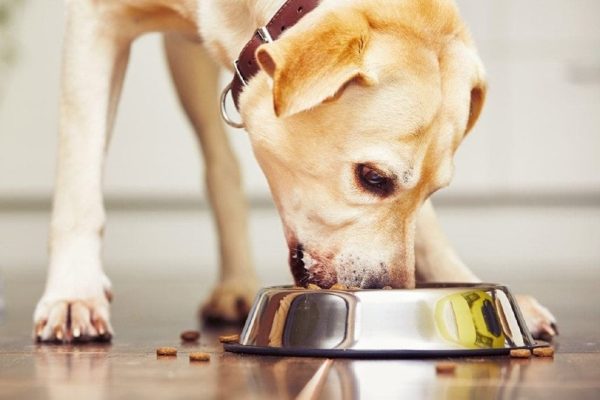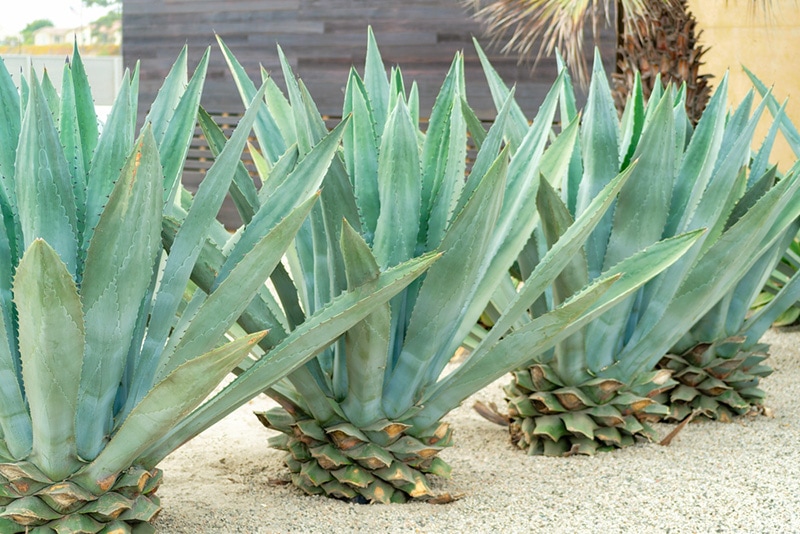For one reason or another, animals always seem to like food that doesn’t belong to them. Perhaps dogs think that cat food tastes better or that the food that doesn’t belong to them is always tastier!
Either way, your canine breaking into your cat’s food can be considerably troublesome. Not only is it likely to upset your cat, but it also can cause health problems for your canine. Cat food is not designed for dogs, after all!
Luckily, there are several ways that you can break your dog’s cat food habits. By utilizing preventative measures and training your canine, you can prevent future cat food robberies.
The 9 Ways to Keep Your Dog Out of Cat’s Food
1. Put the Cat Food on a Table
If you have a small dog, it can be as easy as putting your cat’s food up on a raised table. Most cats can jump onto tables easily, dogs less so. That said, large dogs often can reach cat food placed up high.
Stools and small end tables work well for this purpose. We don’t recommend utilizing a table that you typically don’t want your cat on, like the dining table. Allowing your cat up there to eat sometimes and not at other times can be confusing. Therefore, invest in a table specifically for your cat’s food if you decide to use this method.

2. Install a Dog-Proof Gate
Alternatively, you can keep your dog out of the cat feeding area using a gate. This is similar to placing the cat food somewhere high, except you can prevent your dog’s access to a whole room and not just the cat food bowl.
Depending on the setup of your home, this may be easier than using a table.
There are many gates out there that can prevent access for your dog while enabling access for your feline. Often, cats can jump over gates, primarily if you use a smaller gate. There are also gates with small, cat-sized doors, a perfect option for large dogs.
Some skinny cats can fit through gates with vertical bars, while most dogs cannot.
3. Install a Cat Door
Installing a cat door can also be a suitable solution, depending on where you keep your cat’s food. If your cat’s food is already in a room with a closeable door, this solution can be straightforward. However, installing a cat door can be somewhat complicated. It mainly depends on the model that you get. In some cases, you may need to contact a professional.
This method also doesn’t work well for small dogs. Often, they can just fit through the cat door!
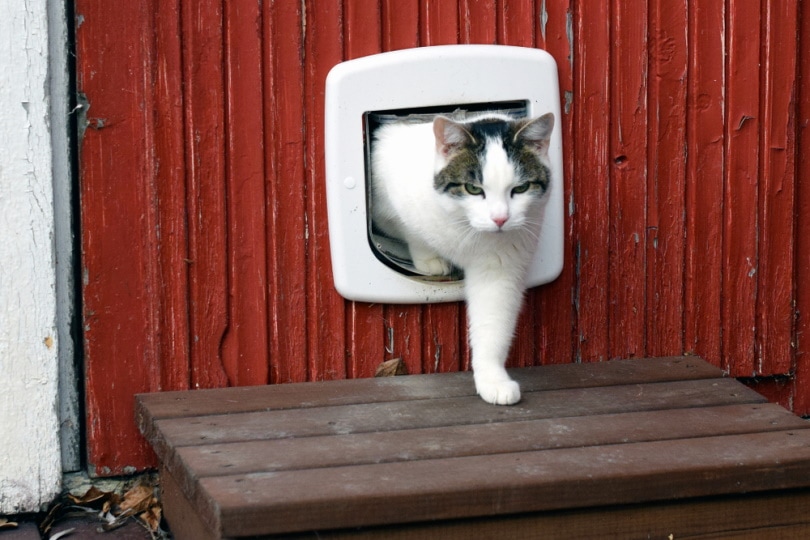
4. Use a Dog-Proof Latch
If you have a larger dog, you can also use a closeable door as its barrier. Purchase a dog-proof latch and install it. These latches keep the door open slightly, enough for a cat to fit through. However, large dogs can’t fit through the opening and therefore, can’t access your cat’s food.
Usually, these latches use sticky pads to adhere to either side of the door, so they can be attached or removed easily.
Small dogs will fit through the opening, so this solution doesn’t work for them. If your dog is about the same size as your cat, you’ll have to use a different method.
5. Get a Dog-Proof Feeding Station
There are several dog-proof feeding stations out there. While these stations are nearly fool-proof, they can be exceedingly expensive. Often, these stations use a sensor of some sort to detect what animal is there. They are only open for the “correct” animal, which would be your cat, in this case.
Depending on the design, though, some cats might refuse to use the station. For instance, some require your cat to go through a small area. If your cat typically doesn’t like enclosed spaces, this isn’t going to work!
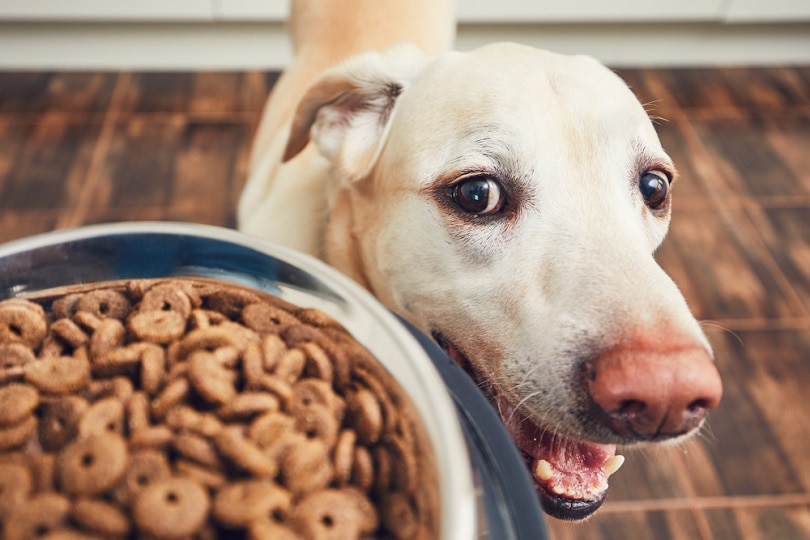
6. Use a Puzzle Feeder
In some cases, your feline may be able to figure out a puzzle feeder, while your dog is entirely left in the dark. These feeders can be perfect for keeping the food away from your dog because they won’t be able to get it out to begin with!
However, this only works if your cat is more intelligent than your dog. Plus, some large dogs may be able to break the toy or shake it until it gives up its treasure. Other dogs may wait for your cat to get out the food and then chase them away, taking the food for themselves.
It can also be difficult for cats to get out enough food for a full meal. Most puzzle feeders also don’t work with wet food.
7. Feed Your Cat on a Schedule
Alternatively, you could feed your cat on a schedule if you’re currently free-feeding. Dogs are much more likely to grab your cat’s food if you leave it out. When it’s always available, it’s easy for your canine to sneak in and grab it.
Feeding on a schedule makes your dog’s job much more difficult. Preferably, you should feed your cat and supervise until they are done. Then, remove the food. This method eliminates your dog’s ability to steal the food. It’s fool-proof, as long as you are around to supervise.
While scheduled feedings do prevent your canine from stealing the food, they may also upset your cat. If your feline is suddenly denied around-the-clock access to food, they probably aren’t going to be too happy!
Scheduled feedings also take extra time out of your day. You can’t just fill the bowl up and leave. Supervision is required for this method.
Switching to scheduled feeding from free-feeding can be challenging! But if you’ve tried other methods without success, it may be the best way to prevent food snatching.
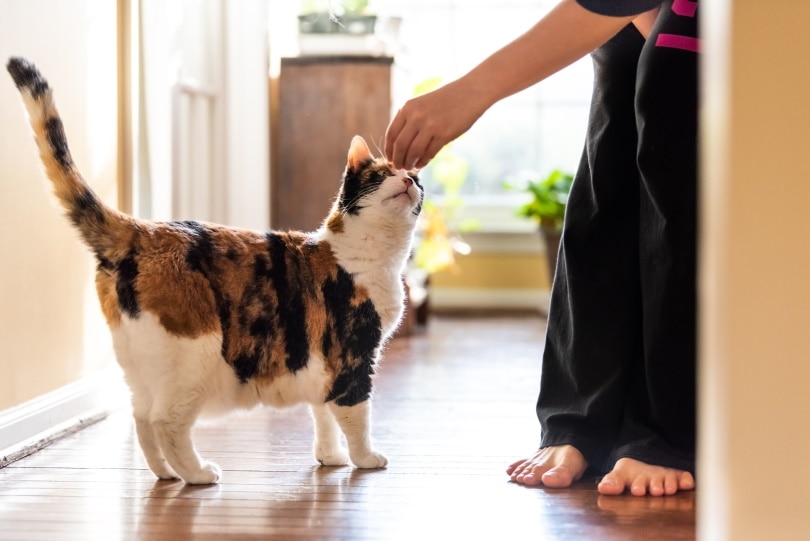
8. Feed Both Pets at the Same Time
In some cases, feeding both pets together will help solve the problem. If your dog has their food, then there is less of a chance that they’ll worry about the cat’s food. Hopefully, your cat will have enough time to finish their food before your dog is hungry enough to become interested again.
This does require scheduling both animals’ meals. Dogs often consume their food as soon as it is placed in front of them, while cats tend to be slower eaters.
So, supervision is often required, especially if your dog is exceptionally food-driven. They may not care that they just got fed!
9. Provide Mental Stimulation
Sometimes, your dog may go after your cat’s food because they’re bored, not because they’re hungry.
Many dogs require more mental stimulation than their owners realize. When a bored dog is left to their own devices, they often try to make their own entertainment, which may well involve eating more than they need to. Your cat’s food may be a simple solution for bored dogs.
Adding puzzle feeders, extra training, and companionship to your dog’s day may help curb their disruptive behaviors.
This method only works for dogs that aren’t super food-driven, though. Some dogs are going to eat food whenever it’s available, simply because they can!
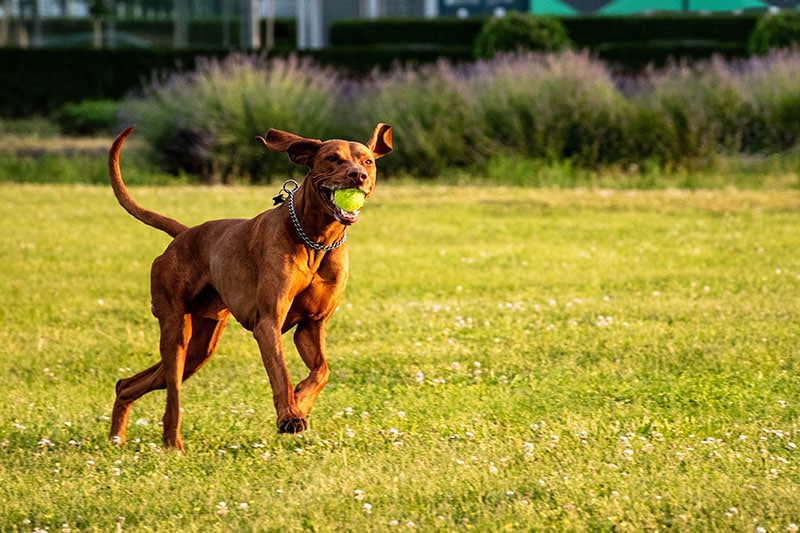
 Summary
Summary
Whenever food is available, some dogs are going to eat it. Many breeds are extremely food-driven.
Your dog eating your cat’s food can cause all sorts of issues, though. For instance, obesity can occur if your dog consumes extra food over the long term. Also, your cat probably doesn’t like their food being stolen.
Luckily, there are many things that you can do to prevent this problem. For instance, you can make your cat’s food unavailable by placing it behind a barrier or putting it up high. Sometimes, advanced puzzle feeders may be necessary.
Featured Image Credit: Jaromir Chalabala, Shutterstock
Contents
- The 9 Ways to Keep Your Dog Out of Cat’s Food
- 1. Put the Cat Food on a Table
- 2. Install a Dog-Proof Gate
- 3. Install a Cat Door
- 4. Use a Dog-Proof Latch
- 5. Get a Dog-Proof Feeding Station
- 6. Use a Puzzle Feeder
- 7. Feed Your Cat on a Schedule
- 8. Feed Both Pets at the Same Time
- 9. Provide Mental Stimulation
- Summary

